Autumn Season Overview 2019
So Stars Align has finished, My Hero Academia has still a couple or so episodes to run… it looks as if the Autumn Season 2019 is mostly over and Winter 2020 titles have begun to appear! It’s becoming increasingly difficult to define a precise moment at which one anime season ends and the next begins.
As quite a few ‘final’ episodes have aired, the writers at Anime UK News have been looking back at the series they’ve been following and wondering if they lived up to their original promise – or jumped the shark. Tell us what you think too… there’s no way we’ve covered every title that was streamed this autumn and it’s always good to hear your recommendations.
Onosume
2019’s seasonal anime revealed itself to be stacked at the year-end, with an absolute load of shows appearing that I didn’t have time to watch and am still catching up on now. I have however managed to keep up with the three shows that I picked for our Autumn Preview, and while one of those exceeded my expectations, the other two I came out as feeling rather mixed on.
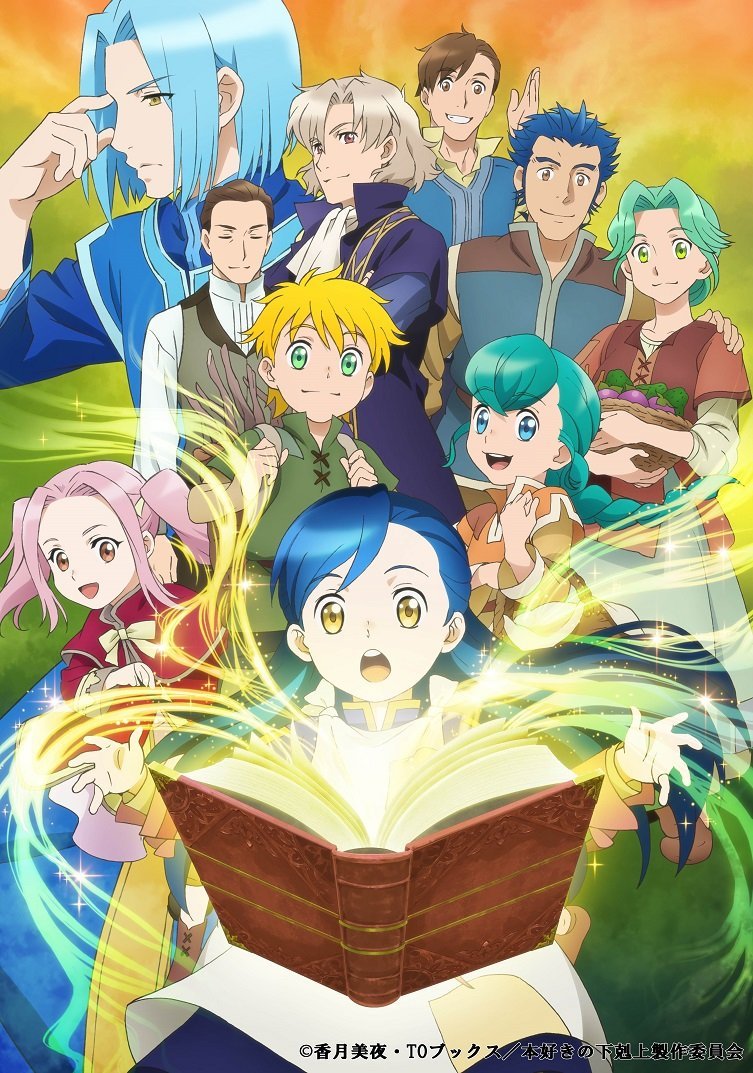
The first of these is Ascendance of a Bookworm. While it started off as a fun show in showing how Myne struggled against all odds to get the books she loves, and introducing new things into this fantasy world gave it a sense of wonder, I felt that it started to fall apart and divide itself too much between two major plot points: Myne making her books, and how the world’s magic affects not just her health but how it integrates into the world’s social hierarchy. The introduction of the latter just started to overcomplicate things and as it hammered more into showing Myne and Lutz becoming merchants, I just found myself becoming bored with the amount of detail it was trying to go into.
Additionally, the aspect of introducing more modern things into an historic world saw some major competition from Dr. Stone, which used it as its central concept and pulled it off more effectively as each re-invention took that series from plot point to plot point.
While it’s a shame ,as I think it did have a strong start, having watched all of its first season I don’t feel connected with it enough and I probably won’t be continuing with it as it moves into its second season this spring.

Gundam Build Divers Re:RISE was also a bit of a weird one, as its approach was unlike any of the other Gundam series that focused on its plastic model kits. Taking inspiration from mobile games, the series had the main characters Hiroto Kuga, Kazami, May and Parviz team up to tackle a series of mysterious story missions within the fictional Gunpla Battle Nexus Online where a group of anthropomorphic dog-like people are under attack from the “One-Eyes”, mobile suits that use the one-eyed design of the franchise’s Jaku mobile suits.
Previous iterations of the Build universe had high-octane tournament arcs and deeper stories involving things like hacking and disrupting the system, so this series’ focus on a self-contained story definitely felt like a big change. Here was a story that felt pretty small-scale and one part of a greater whole, so I was surprised when it just kept rolling on with it, week after week. “Surely this can’t just be it?” I remember thinking, and I questioned why they were using GBN to tell this specific story. And then it unleashed its big twist and suddenly everything fell into place, and actually, this is looking to be a lot better than I originally thought it was, as that twist basically turns your understanding of the show upside-down, while setting up a great plot point for the second half.
It’s just a shame that we have had to sit through an average by-the-numbers storyline involving the NPCs (or Non-Player Divers, as they are called in the show) for so long, while there’s actually something a lot more interesting going on in the background.
Credit where credit is due though, as although I wasn’t taken with the story as much, the development of the characters themselves was well done, and I’ve enjoyed seeing characters like Kazami and Parviz overcome their personal difficulties. The NPCs got better too, and although I still find Freddie to be an annoying mascot character, Stola’s character development was spot-on and I’m looking forward to seeing where they take him in the next season.
And it’s that next season I’m looking forward to, and hoping that the overall pay-off will be worthwhile.

The series that I have most enjoyed this season however, has been the second season of Kono Oto Tomare! Sounds of Life, which has proved to be a heartfelt competition series that mixes together a lovable cast, a bit of teen melodrama and some light romance to produce a really compelling story. Both myself and Sarah have been on this since its first season aired in the spring, and it’s really surprising that I haven’t really heard anyone else talk about it.
As a competition series, the core of the show will feel familiar to many who have watched sports anime or similar: a down-on-their-luck high school club is rebuilt from the ground up with some talented members, and takes on some heavyweight schools in an effort to come out on top at the regional competition and go to nationals. While this is the same plot as any other competitive high school club show, it’s the characters that truly make it, and I completely fell in love with this bunch of idiots. They are endearing to a fault, always getting back up when they’re pushed down, and just show so much commitment and passion towards the world of traditional Japanese music that I find all of them, even the characters from the other schools, to be quite admirable.
While this half of the show does start off slow, as I mentioned in the preview article, it quickly gathers pace and we get to see some huge pay-offs for specific characters that have been building from its first season, as Satowa Hozuki finally gathers the courage to face her mother and the legacy of her school of koto, and Chika Kudo finally absolves himself of the guilt surrounding his grandfather’s death. It’s not all perfect though, and I do think some of the characters in the Tokise Koto Club are sadly forgotten about or left on the sidelines; and the romantic tones that were set up early on in this season were pushed to one side a bit too quickly.
Yet it’s the love for the koto as an instrument that really shines through, and there’s some lovely pieces that come in and allow the instrument itself to take centre stage towards the end.
Although the second season leaves things on a high, I am hoping that this gets a third season as I’d love to see and hear more. There is always the manga, but I’m not sure it would have the same impact without the sound of the actual instrument.
Ascendance of a Bookworm is available for streaming on Crunchyroll. Gundam Build Divers Re:RISE is streaming on both Crunchyroll and the GundamInfo YouTube channel. Kono Oto Tomare! Sounds of Life is streaming on FunimationNow.
Josh A. Stevens
Have you heard of the sunk cost fallacy? Investing more time and money into something based on what’s already been committed before is pretty much why I found myself slogging through this season’s uninspired sequel series, Food Wars! Shokugeki no Soma – The Fourth Plate to its end. While I haven’t had many opportunities to write about it before, I’ve been an avid fan of the Shonen JUMP cooking battle anime since the first season, even incorporating some of its tips into my own cooking (using honey to trap juices in burgers actually works!). That’s why I’m so disappointed that what was once the anime equivalent to a cheeky Nando’s, is now a stale McDonald’s.
Azami Nakiri and his vision for Central really were the perfect foils for the unpredictable Soma Yukihira and an Erina Nakiri desperate to break free of her cage, but they were handled so poorly that their sole purpose became irrelevant. Given how the previous season established that students were being taught to strict recipes and methods, why would the Elite Ten, the standard bearers of Central, be allowed as much creative freedom as the rebels, instead of modelling Azami’s confidence in his dictated recipes? Nor did it make much sense for the series to build up a connection between Azami and Joichiro (Soma’s father), for their only meeting to be during the epilogue. While Azami was largely Erina’s foe to vanquish, actually seeing him compete in the Team Shokugeki against either Joichiro or even Soma by proxy, would have helped tighten that narrative thread. As it stands however, it’s little more than paper-thin motivation for a generic bad guy.
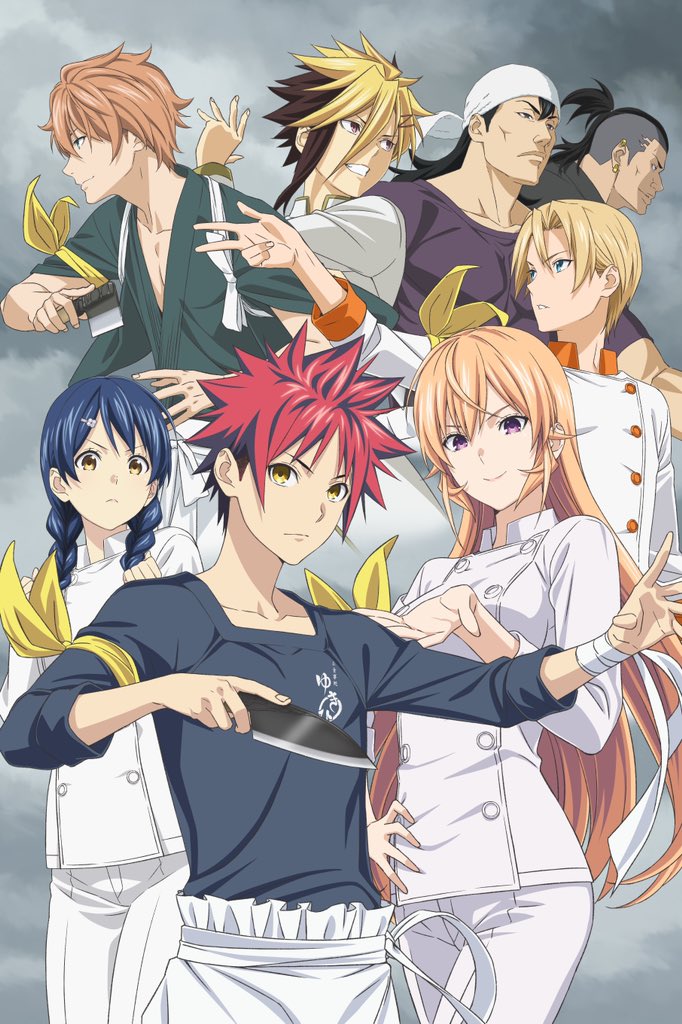
A big problem with a series that almost entirely jumps straight from one “shokugeki” cooking battle to another, is that it leaves the whole thing feeling formulaic and bland. Perhaps it’s always been the case, but the constant stream of matches made me conscious of how it’s always the competitor who serves their food second that wins, and most victories could be determined the moment the competitors were revealed. Megumi and Momo’s match was the only one I can remember that broke this formula, so it’s no surprise that it’s the only match I really engaged with. Others still had their moments though, like Takumi weaponising his pettiness into the grand reveal of his Doppio Mezzaluna Pizza.
The Fourth Plate also brings a satisfying conclusion to Erina’s narrative arc in a way that would have made an endearing finale to an entertaining yet imperfect JUMP series, complete with satisfying callbacks to the series’ beginning. However, this stopping point is jumped straight over with confirmation of The Fifth Plate coming in April. With manga readers already warning me that it all falls apart next arc, I can’t help but wish this was Food Wars‘ last course. At least the complacency of this season means no embarrassing CG chefs this time.

Although it was broadcast in Japan’s summer season, through the enigmatic spending power of Netflix, this season I finally found myself once again enchanted by the smug grin of Teasing Master Takagi-san, with its second season launching internationally this past December. The slice-of-life romantic comedy continues in the same vein as its previous season, with its run-time dedicated to the adorable mental gymnastics of timid middle schooler Nishitaka trying to outwit and score a “win” against his teasing desk neighbour, Takagi.
Half-episodes of Nishitaka guessing why Takagi’s not riding her bike or trying to surprise her by dropping an honorific may sound low stakes on paper, but I regularly found myself more engrossed than any Food Wars! cook off. That’s because Teasing Master Takagi-san really sells each situation by showing us what victory and defeat mean for Nishitaka – and at that age, isn’t potential embarrassment in front of your crush the highest stakes there are? The series is also helped by all of its characters being utterly adorable. I love Takagi’s sly smirk, Nishitaka’s flustered fronts, and even Mina’s precious ditziness. Watching the adorable antics of children so obviously in love regularly left me squealing like a delighted schoolgirl. Teasing Master Takagi-san Season 2 really is a wholesome delight.

I think we also need to acknowledge the absolute travesty of We Never Learn: BOKUBEN‘s anime original ending. As a manga reader, I was already disappointed by Studio Silver and Arvo Animation’s flat, artistically inferior adaptation, but I never thought an anime could risk my enjoyment of the original. The identity of the girl who held Yuiga’s hand at the school festival has been every reader’s biggest question, especially when the narration confirmed it’s who he ends up with romantically. So, with the manga’s narrative seemingly heading towards its climax, the anime original epilogue has left me wondering whether its suggested “winner” was advanced knowledge from manga author Taishi Tsutsui, or simply the anime team acting on their own. The author’s vague comment on the matter though, has me worried that an adaptation has spoiled the original’s ending. Either way, not a good move.
Food Wars! Shokugeki no Soma – The Fourth Plate and We Never Learn: BOKUBEN are available for streaming on Crunchyroll, and Teasing Master Takagi-san Season 2 is streaming on Netflix.
HWR
This season wasn’t exactly stellar but it did have its highlights. Continuations of series’ like Food Wars and BOKUBEN were decent but unremarkable endeavours, whilst titles such as VINLAND SAGA and Dr. Stone which carried over from the previous season offered more entertaining results.

Thinking on seasonal highlights I did find myself getting a good laugh out of Africa Salaryman each week despite the wonky animation. The series never takes itself very seriously and Toucan is a perfect example of comedic karma. It was also a case of a series not running itself too dry even if some episodes were funnier than others.
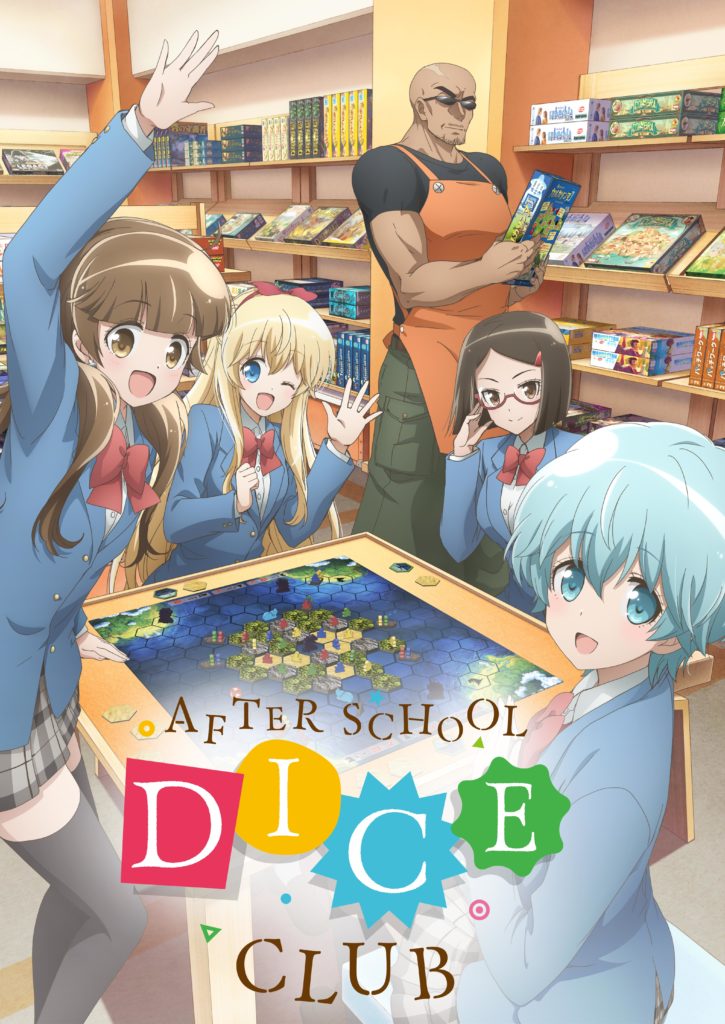
Elsewhere I’ll also give mention to After School Dice Club and Outburst Dreamer Boys, two anime with similar premises that may have flown under the radar for some viewers this season.
After School Dice Club is a simple enough SoL that focuses on a group of high-school students forming a club revolving around playing and eventually creating board games whilst Outburst Dreamer Boys follows a group of imaginative teens who also form a club to carry out their chunibyo lifestyles.
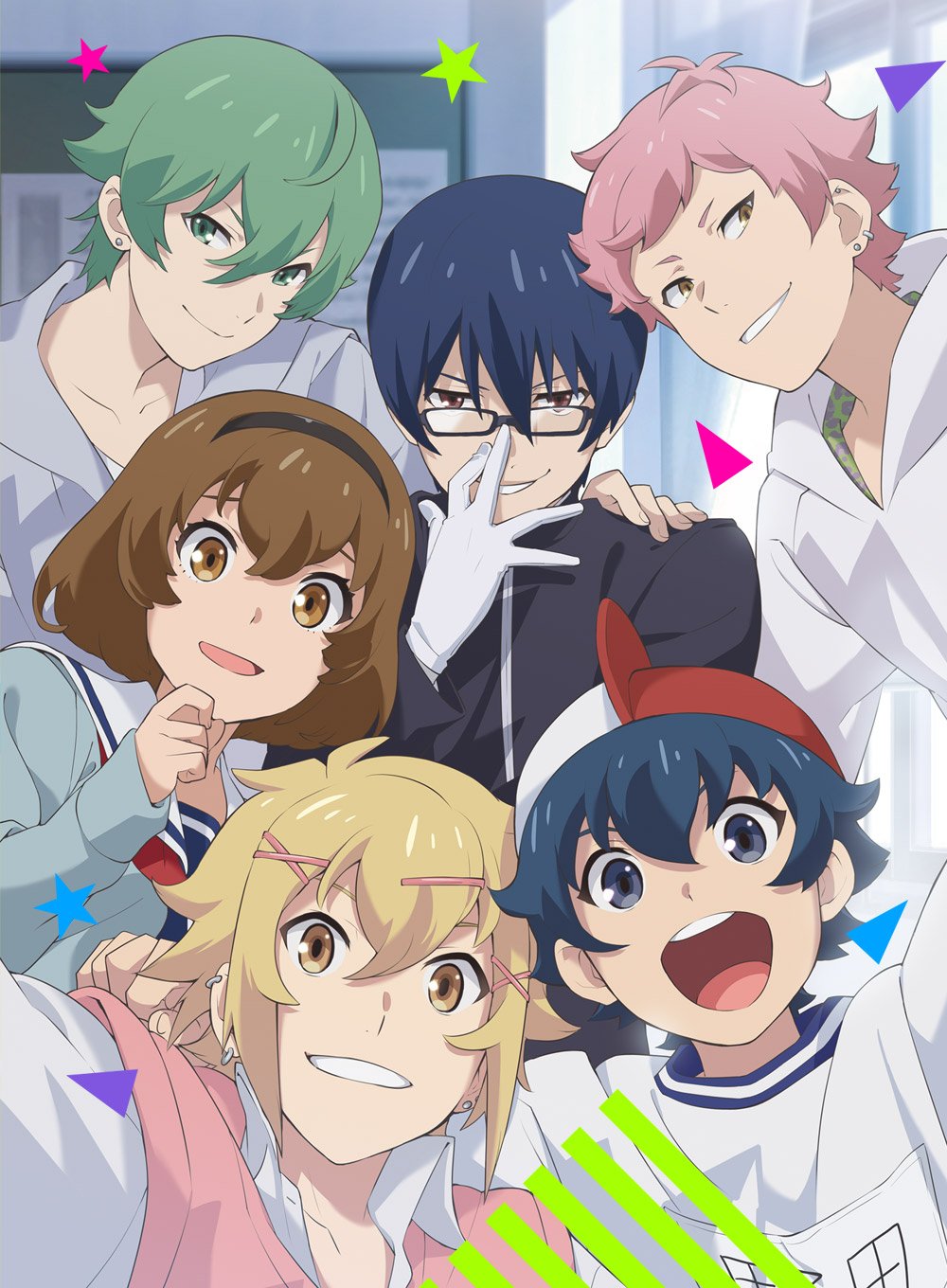
Both offered fun and heart in differing fashions and left an impact on me that other titles from the season didn’t necessarily have.
On a final note I would have discussed Babylon, but like a lot of the characters in the show it sort of stopped dead in its tracks and was put on hold for half the season so maybe it’ll get a mention in the future.
Africa Salaryman and After School Dice Club are available to stream on FunimationNow whilst Outburst Dreamer Boys is available to stream on HiDIVE.
Demelza
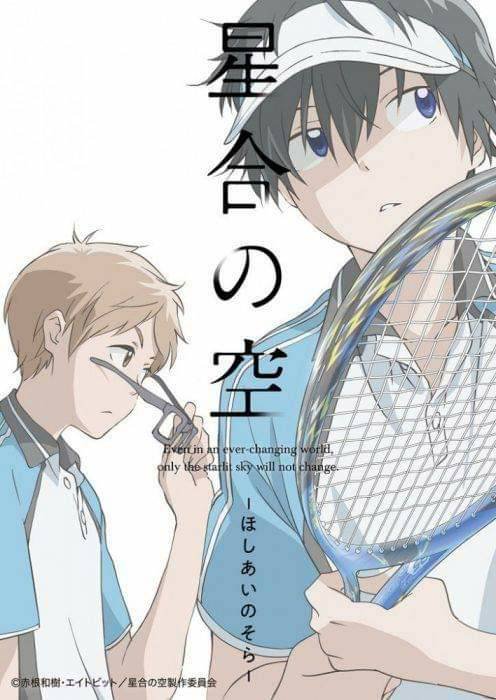
While I’ve spent the series enjoying blockbuster hits like My Hero Academia, Sword Art Online and Food Wars! I’ve also found the time to enjoy some of the new series that graced our screens.
In the Autumn Preview article I was singing the praises of Stars Align, a soft tennis series that delivered fantastic sports coverage as well as hard-hitting teen drama storylines. Every episode had me on the edge of my seat right up until the final week. The problem is that Stars Align does not have a conclusive ending and unless it gets a second season (which depends on its sales, according to the team!) it won’t remain memorable.
The series was originally supposed to be two cours and a last minute schedule change left it with only 12 episodes. The director didn’t want to change the storyline the team had been working on so hard and kept it as it was, which is obvious from how Episode 12 ends. It doesn’t wrap anything up and instead feels like a mid-season climax.
Despite its problems, the show is still easily the best from the Autumn Season. The cast were well developed and likeable and I think it balanced the sports and drama well, allowing viewers to grow interested for either side of the show. The production remained strong, with some fantastic animation for the tennis matches from studio 8Bit. I really hope it does get that continuation in the end because I think it could be absolutely fantastic with another season’s worth of content.
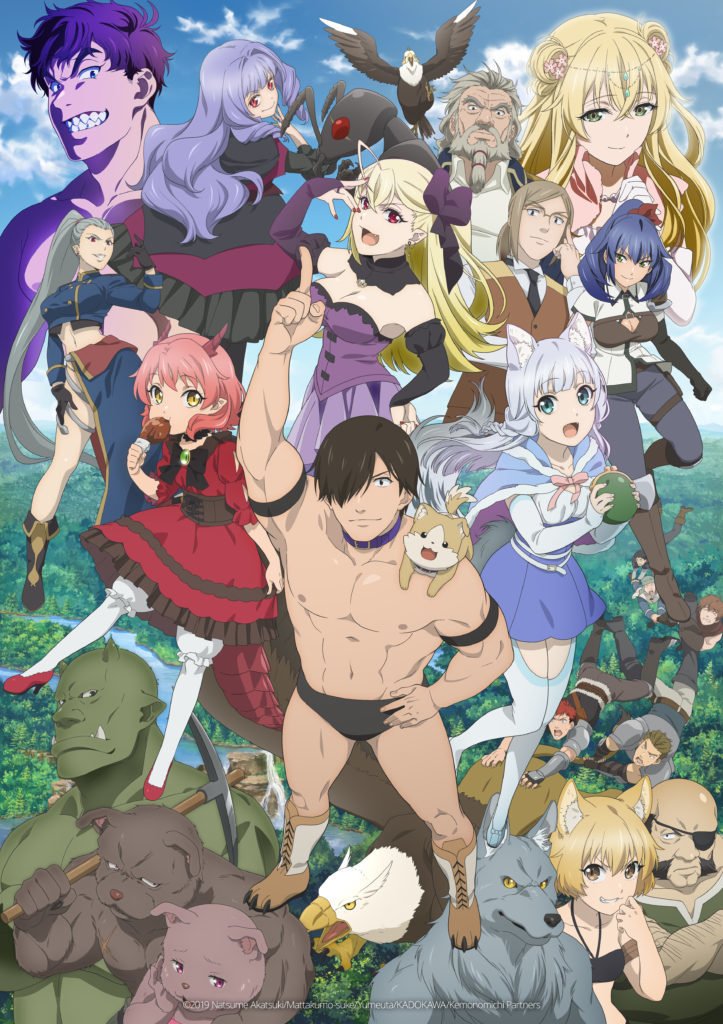
Another of my recommendations from the start of the season was Kemono Michi: Rise Up, an isekai about a professional wrestler who wanted to open his own pet shop. Protagonist Genzou Shibata does succeed in opening his shop, but making money to feed all the magical beasts he’s befriended soon becomes an issue! Genzou’s love of animals isn’t going away anytime soon and he continues picking up any strays he finds, so it’s up to new friend Shigure to come up with some money-making schemes before everyone goes hungry.
From start to finish Kemono Michi was a great anime. Sure, it won’t win any awards but it was fun. As an animal lover myself it was easy to relate to Genzou and his desire to run the pet shop. A wide range of side characters kept the story interesting and the final arc worked well to tie up loose ends with one particular rival Genzou has had since Episode 1…
Although the manga series is still on-going the anime does a good job of giving us a satisfying ending. I’m left keen to see more of the series (hopefully someone licenses the books!), but if this is all we ever got I think I’d be happy. If you’re a fan of Natsume Akatsuki’s humour then you definitely need to make time for this one.
Kemono Michi and Stars Align are both available on FunimationNow.
Cold Cobra
While I didn’t get to expand my range… at all, I can at least comment on the two series I expressed excitement for at the start of the season, the first of which was My Hero Academia‘s Fourth Season! Although its only halfway through, there are some things to talk about…

When I’ve praised My Hero Academia in the past, I’ve often talked about how taking a seasonal approach rather than weekly episodes was a great choice for making sure the series lacks filler, and while that’s still true, there’s no denying that several episodes early on in this arc stretched scenes maybe a little too thin, with whole episodes feeling like they completely lacked any momentum. Thankfully things soon swung into full gear and the last few episodes that have aired have been shonen anime bliss: top class action scenes, emotional moments and some great character development amongst it all. The newly introduced mentor character known as Nighteye has been particularly interesting to see layers of peel away, and Mirio “Lemillion” Togata went from gag character to someone you genuinely felt respect for/sorry for as a viewer. New villain Overhaul also brought in the goods as a villain you really… REALLY want to see get his comeuppance.
Overall it was a slow build, but it pulled off the pay-off perfectly (and we’ve still got an episode or two left in the arc!)
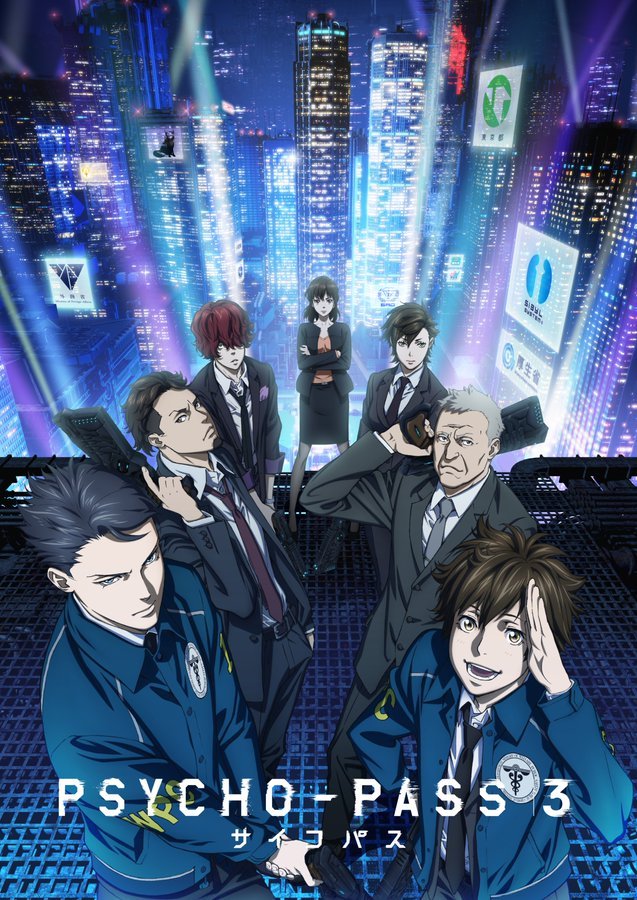
The other show I watched was Psycho-Pass 3, which now you’ve seen me name the original series as my pick of the decade, but hand waved what came after it, you’ll know my investment in this series is high. Thankfully P-P 3 was far better than 2 and the movie, though it didn’t come close to the heights of 1. The new leads Arato Shindo and Kei Mikhail Ignatov had a really good and believable friendship, and the cases they worked together on were all really fun dystopian sci-fi affairs. The over-arcing plot of a gambling ring of rich people operating under the radar of the all-powerful Sybil System was a great idea, and a twist involving Ignatov during the final episode was brilliant… but my main complaint has to be the ending, in that there wasn’t one. The current case they were on ended, but the main plot arc was unresolved, and the last few scenes were the sort of thing you get mid-way in a series to keep people interested, not end a season outright. I’m sure at some point this year we’ll hear of as Psycho-Pass 3 Season 2 (because if they claim this was a complete season they’re lying! … Though I wouldn’t be surprised to hear it called Psycho-Pass 4…) and I’m sure it will build to a satisfying climax. All the pieces are there and the writing has been excellent so far, but I’d assumed this was self-contained like 1 and 2, but instead I got half a show, it kind of left me annoyed…
Once the story is actually complete though, it could be something very special indeed. Let’s keep our fingers crossed!
So that was my Autumn… two shows. I really wish I had more time for new properties, but when I’m not watching a new season of a series I’m already interested in, I’m often catching up on a large backlog of other anime! What a lovely problem to have…
Sarah

At the risk of sounded a tad jaded, I haven’t been that keen on many series streaming this season. The surprise hit for me (and many others, I suspect) was Welcome to Demon School, Iruma-Kun which is continuing into Winter 2020 and showing no signs of flagging (Crunchyroll has recently started offering a decent dub as well). It’s a nostalgic pick-me-up, a tonic of a fantasy comedy show which reminds me of my all-time favourite Kyo Kara Maoh in all kinds of good ways. It’s well plotted, the characters are endearing and/or crazy (even green-haired manic pixie demon-girl Clara) and the retro-styled artwork, colours and music add to its charm. Fourteen-year-old Iruma is a good-natured boy who can’t say no anyone – consequently, his feckless parents have used their poor child to make money for them, culminating in selling his soul to the demon Sullivan. Iruma expects the worst – but it turns out that childless Sullivan has long yearned for a grandchild! Thrown into a life of luxury in the Demon World, Iruma’s only problem is that he must now attend Babylis, the Demon School, and constantly hide the fact that he is a human because humans are the demons’ favourite food. And without magic of his own, how will he ever succeed in class, especially when the first task set by the fearsome teacher, is to summon a familiar? Treats along the way include what happens when Iruma attempts to summon a familiar and how he unwittingly discovers what beautiful but formidable School President Ameri’s guilty secret is. Enjoy!
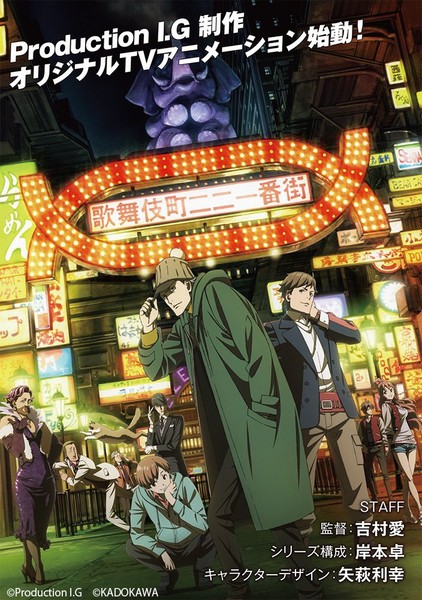
I had hopes that Case File no 221: Kabukicho would improve (it’s currently halfway through its run) especially if it could shed the deeply unpleasant Jack the Ripper plot and lose its crude and tone-deaf approach to portraying LGBTQI+ characters. Unfortunately, it’s managed neither so far and, despite the emergence of Irene Adler (‘the woman’ in the original Sherlock Holmes) the repercussions from the Jack the Ripper plot continue. At least we now know why John Watson had to flee his hospital job (after twelve episodes) but it still, in spite of its classy jazzy score and OP, feels as if it was a good idea that fell into the hands of the wrong scriptwriters. Sherlock continues to lapse into rakugo to explain (a nice touch) and Pipecat, Mrs Hudson’s very large cat, has an episode all to himself, but somehow even that falls flat (Tada Never Falls in Love had a much better large cat-centred episode). I’ll continue watching, if only in the hope that it improves, but if you’re looking for a good Conan Doyle series, my money’s on Moriarty the Patriot.
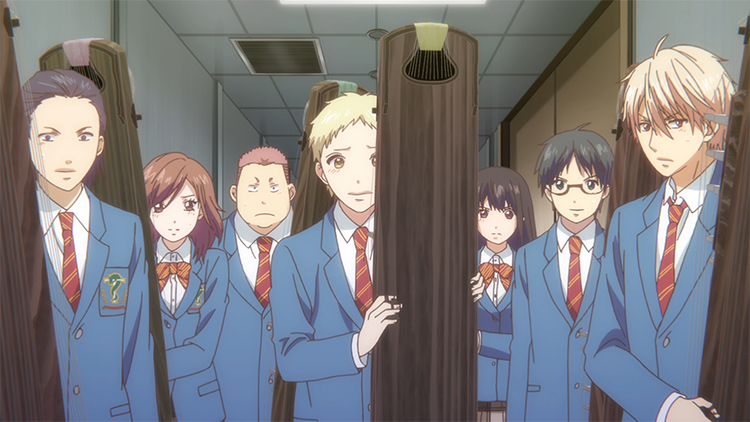
Last of all, I must endorse all the good things that Onosume has said above about Kono Oto Tomare!. I was a little harsh about the first part of this series about a high school music club (the word ‘soap’ might have crept into my review) but that’s only because I hoped for deeper character development and less easy angst. Even though there is still angst in the second set of episodes (14-26) the series settles into concentrating on the seven members of the koto club learning to play together and compete with other schools to go to the national finals. And here the series succeeds really convincingly. I find (speaking as a onetime music teacher) the relationship of the students and the two adults preparing them for the competition very believable – and the problems of playing the koto in ensemble makes for surprisingly gripping viewing. We’re treated to some dazzling performances along the way – as well as – inevitably – getting sucked in to rooting for the seven to prove their harsh critics wrong. A hidden gem that definitely deserves more recognition.
Welcome to Demon School, Iruma-kun is streaming on Crunchyroll, Case File nº221: Kabukicho and Kono Oto Tomare! Sounds of Life are streaming on FunimationNow.


